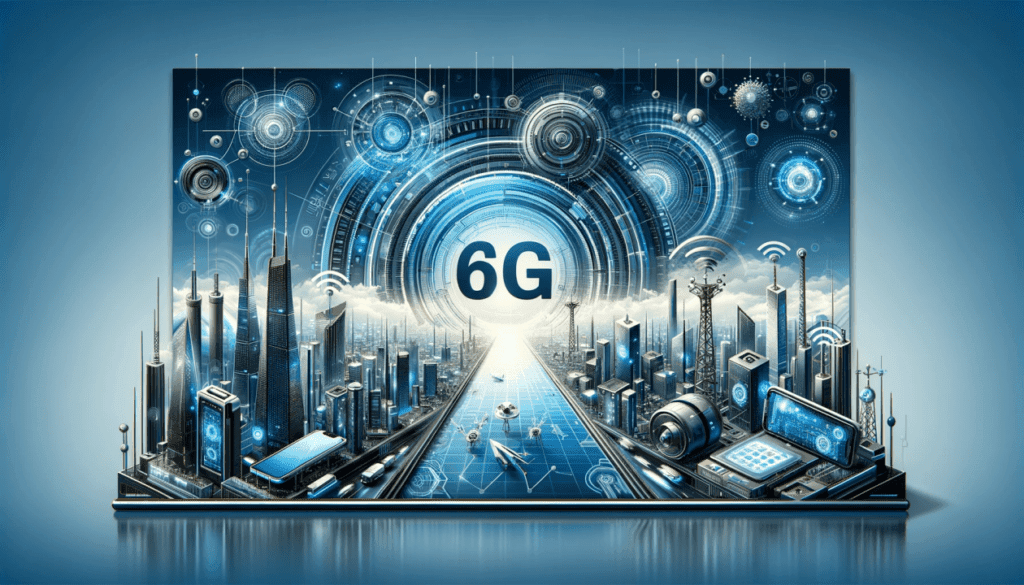

The era of 6G is fast approaching, and it promises far more than just faster internet speeds. While 5G revolutionized mobile connectivity with its ultra-fast speeds and lower latency, 6G is set to take this evolution to the next level, offering intelligent, self-optimizing networks that will change how we interact with the digital world. At the heart of this transformation is artificial intelligence (AI), which will be the enabler for making 6G networks autonomous, adaptive, and more efficient than ever before.
6G: Beyond Speed
While the promise of faster internet speeds is one of the key aspects of 6G, it’s not the sole focus. This network aims to create a “cognitive network,” meaning it will be a system capable of thinking, learning, and adapting in real time. Unlike the more static, human-configured systems of today, 6G networks will be self-optimizing, continuously adapting to changes in demand, energy usage, and environmental factors. These networks will be designed to learn from experience, improving their performance over time without requiring human intervention.
This level of autonomy will be made possible through the integration of AI across all parts of the network. From the radio access network (RAN) to deep learning at the edge, AI will drive efficiency, reliability, and scalability, making 6G networks more responsive and intelligent.
How AI Powers 6G Networks

AI will play a central role in nearly every aspect of the 6G ecosystem. Here’s how AI will be integrated and utilized:
- Self-Optimizing Networks
One of the most transformative features of 6G networks is their ability to optimize themselves automatically. AI will monitor the network in real-time, identifying bottlenecks, inefficiencies, and other performance issues. By analyzing vast amounts of data, AI can adjust parameters, optimize traffic routing, and even manage network resources in a way that maximizes performance without manual intervention. This process will improve the overall user experience, ensuring faster speeds and reduced latency even during peak times. - Intelligent Radio Access Networks (RAN)
Radio Access Networks (RAN) are the backbone of mobile communication, connecting devices to the network. In 6G, AI will be integrated into RAN to enable real-time decisions about spectrum management, interference reduction, and power optimization. By leveraging AI algorithms, the RAN will be able to dynamically adjust to network conditions, ensuring better coverage and more efficient use of the available spectrum. - AI-Driven Edge Computing
Edge computing, where data processing occurs closer to the end-user rather than in distant data centers, will be a key enabler of 6G’s ultra-low latency. AI will be deployed at the edge to make decisions about how and where data should be processed. By analyzing data locally, AI can deliver faster, more responsive services, such as augmented reality (AR) and virtual reality (VR) applications, which require high-speed, low-latency connections. - Energy Efficiency
One of the biggest challenges in the deployment of next-generation networks is the energy required to power them. 6G networks will need to be energy-efficient to support the massive growth in data traffic. AI will help optimize energy consumption by predicting traffic patterns and dynamically adjusting network resources to meet demand without overconsumption. AI can even adjust the network based on environmental factors, such as temperature or humidity, ensuring minimal energy use while maintaining optimal performance. - Predictive Maintenance and Reliability
With AI, 6G networks can predict when components will need maintenance, reducing downtime and improving overall reliability. AI will monitor the network’s health in real time, anticipating failures before they occur. This predictive capability will allow network operators to perform maintenance proactively, avoiding service disruptions and extending the lifespan of network infrastructure.
6G’s Real-World Impact
The implications of AI-driven 6G networks are vast. Here are just a few areas where 6G could have a profound impact:
- Smart Cities
AI-powered 6G networks will enable smart city infrastructure, where everything from traffic lights to waste management systems is connected and optimized. With real-time data analysis and automated decision-making, cities will be able to manage resources more efficiently, reduce energy consumption, and improve quality of life for residents. - Healthcare
This network’s low-latency, high-speed capabilities, combined with AI, will enable new advancements in healthcare, such as real-time remote surgeries and AI-powered diagnostics. Medical professionals will be able to access critical patient data instantaneously, and AI will help provide personalized treatment recommendations based on real-time data analysis. - Autonomous Vehicles
With AI running the network, autonomous vehicles will be able to communicate with each other and with traffic management systems in real-time. This will make self-driving cars safer and more efficient, reducing traffic congestion and improving road safety. - IoT and Industry 4.0
The Internet of Things (IoT) will be further empowered by 6G, as billions of connected devices will rely on the intelligence and low-latency capabilities of the network. This will drive the next wave of industrial automation, with AI helping to manage everything from supply chains to factory operations.
Conclusion: 6G Will Redefine the Digital Landscape
As AI is integrated into every layer of the 6G network, we can expect a smarter, more responsive digital world. From energy efficiency to autonomous systems, this network will bring transformative changes that go beyond just faster speeds. The combination of AI and this network will create networks that are self-optimizing, resilient, and more intelligent than ever before.
The future of connectivity is not just about speed—it’s about creating networks that can think, learn, and adapt to the needs of users, businesses, and the environment.
FAQs
1. How will AI enhance the performance of 6G networks?
AI will optimize network traffic, improve spectrum management, and predict maintenance needs, resulting in a more efficient and reliable network.
2. What is the role of AI in energy efficiency for 6G?
AI will predict traffic patterns and optimize network resources, ensuring that energy is used efficiently without compromising performance.
3. How will 6G impact industries like healthcare and smart cities?
This network, powered by AI, will enable real-time applications like remote surgeries, personalized healthcare, and smarter city infrastructure, enhancing efficiency and quality of life.




